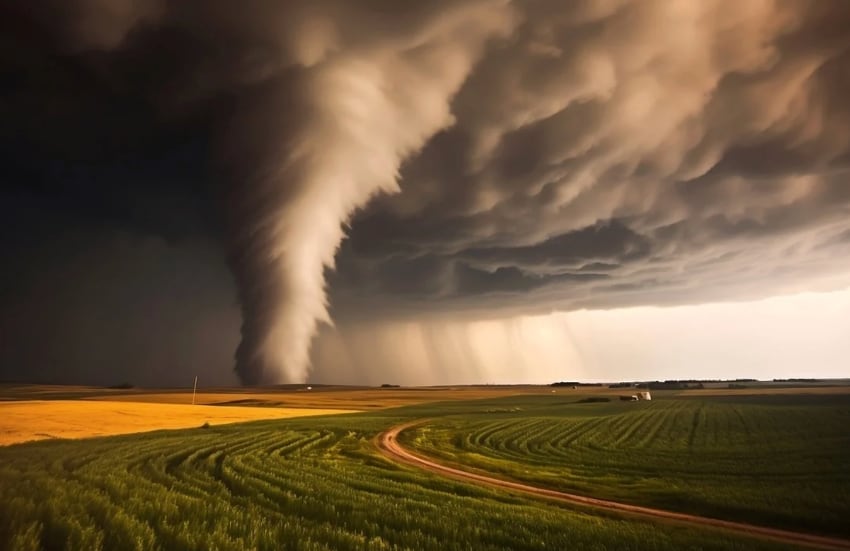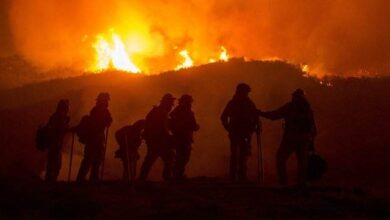Severe storms, tornadoes kill 40+ and damage property across US Midwest and South

An outbreak of severe and convective weather across the US Midwest and South looks set to be costly for the insurance and reinsurance industry as tornadoes, large hail, strong winds, dust storms, wildfires and flooding all turned deadly over the weekend.
Andrew Siffert, Senior Meteorologist at BMS Group, had warned on Friday that there was “the potential for a historic outbreak starting today and extending into the weekend,” with factors aligning that meant “A powerful low-pressure system is poised to unleash severe weather across the Central Plains and into the Mid-Atlantic from March 14th-15th, bringing tornadoes, damaging winds, damaging hail, and even heightened wildfire risks.”
Discussing the severe weather that struck southern states from Texas to the Mid-Atlantic from March 3rd to the 6th, Siffert said on that outbreak “While it is too early to determine the exact losses from this recent severe weather outbreak, its impacts would likely surpass a half-a-billion-dollar event,” adding on his outlook for the weekend just gone March 14th-15th, “This week’s forecasted event will likely have similar impacts and highlight that the insurance industry is facing challenges as severe convective storms are becoming more costly.”
Insurance and reinsurance market losses from severe weather, convective and winter storms has been running behind trend for the first-quarter so far, which has been helpful for aggregate reinsurance and retrocession contracts, including catastrophe bonds.
But these March events appear to have the potential to become an erosion factor for certain aggregate arrangement attachments, which could prove more meaningful this year for the insurance-linked securities (ILS) industry given the high level of attachment erosion experienced after the California wildfires in January.
The severe weather over this weekend has caused meaningful damage to areas across the US Midwest and South, with Missouri particularly affected by tornadoes and at least 12 deaths being reported in that state.
Both Texas and Kansas were impacted by severe weather and experienced a major dust storm that caused vehicle pile-ups and further loss of life.
More than 150 wildfires were reported across states including Oklahoma. Fatalities were also recorded in Arkansas, Alabama and Mississippi, while flood warnings were in effect for areas of Texas, Louisiana, Alabama, Arkansas, Tennessee, Mississippi, Georgia, Kentucky and North Carolina.
As many as 320,000 people were without power by Sunday evening as the recovery from the severe weather outbreaks began.
In Missouri, where the tornado impacts seem to have been most significant, Governor Mike Kehoe explained that “the scale of devastation across our state is staggering,” with hundreds of homes, businesses and other buildings damaged by tornadoes, hail and strong winds.
Mississippi, Alabama and Arkansas were also affected by tornadoes, with 6 deaths reported in the former and 3 in the latter two states.
Commenting on what was experienced in the way of severe weather, BMS Group’s Siffert said on the first day it was, “far reaching across much of the plains with severe winds, wild fires, dust outs, tornadoes and hail,” while on Saturday’s weather damage he said it, “Probably was not an echelon event like some of the storm-specific forecast models were suggesting, but in communities like Gordo, Calera, Plantersville, Taylorville, Kentwood, and others, to them, it was April 27, 2011. Just because we didn’t see violent tornadoes hit significant cities doesn’t mean there weren’t impacts.”
Tornado trends are running below average so far this year in the United States, but this weekend has brought the tally closer to the averages and signal the start of the early spring season of severe weather and convective storms.
This year, the catastrophe bond market is going to be watching closely as with a number of aggregate multi-peril deals marked-down heavily since the wildfires at the start of the year, their attachment buffers are thinner than would sometimes be anticipated at this stage of the year, meaning a damaging severe weather season could result in more cat bond coverage attaching.
Of course, that also reads across to private reinsurance and retrocession agreements, some of which will be collateralized by ILS markets.



